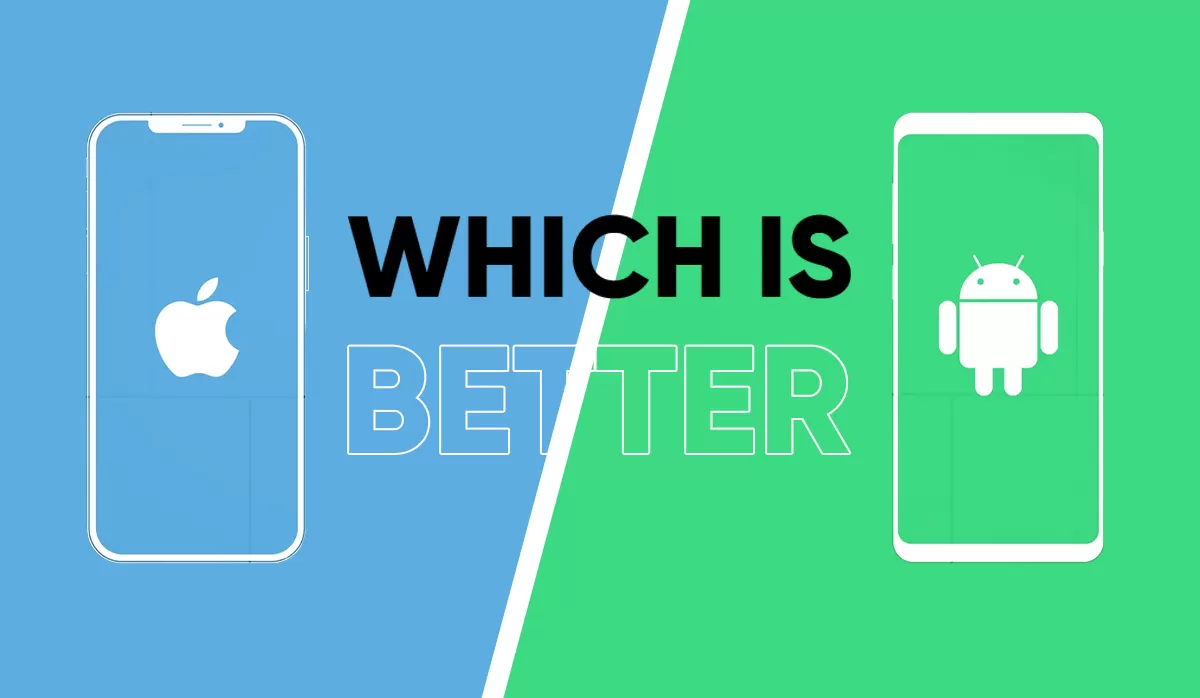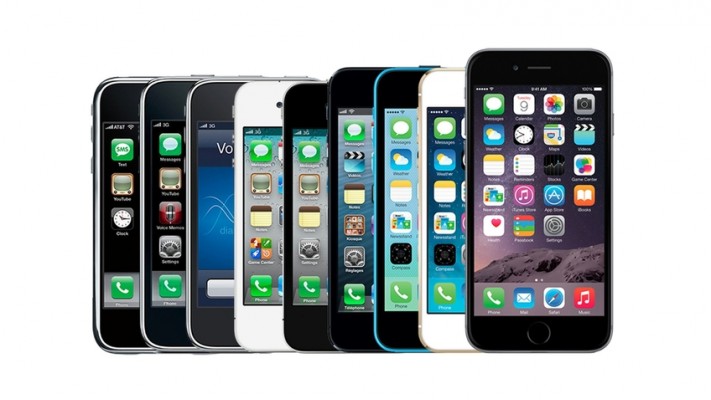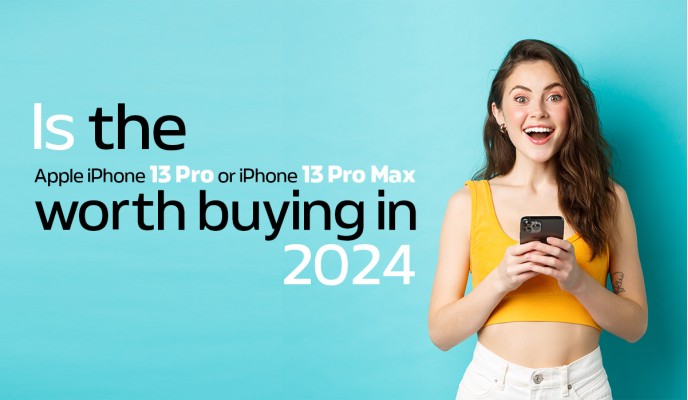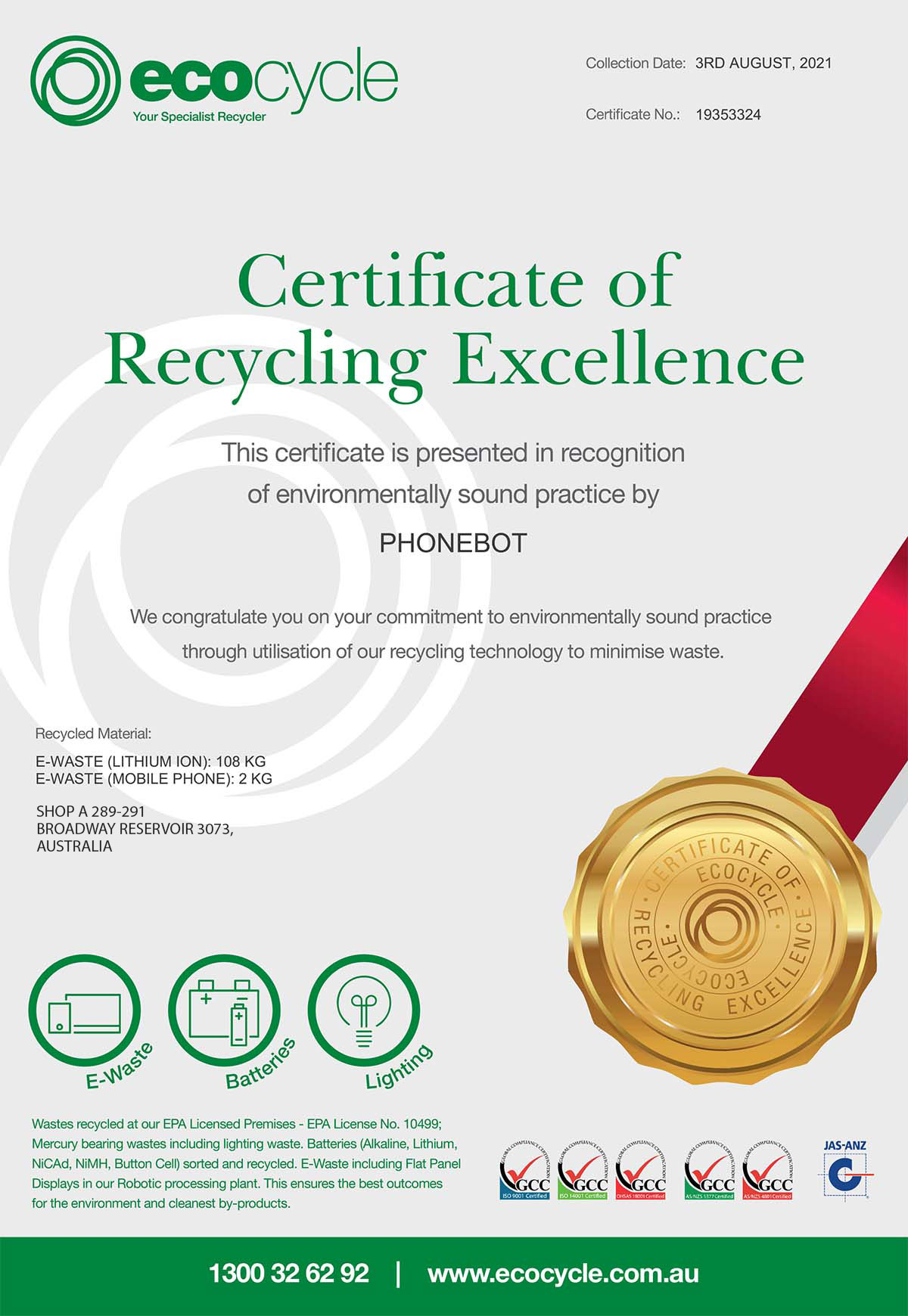Which Is Better, iOS Or Android?

Each year, with the advancements of Android phones and the release of new iPhones, the iPhone vs. Android debate gets even more complicated. The answer to this debate differs from case to case depending on several factors.
These factors include the cost, specs, and needs of the consumer. In this article, we discuss several factors necessary to assess the qualities of both systems.
Only after considering all these factors can one truly settle this age-old debate for one's self.
So without further delay, let's dive in.
iOS Vs. Android Smartphones: Cost
When buying a smartphone, the age-old question remains - Android or iPhone? Cost is a crucial factor in making this decision.
On the one hand, iPhones are renowned for their premium design and cutting-edge technology, with prices starting at $699. On the other hand, Android phones offer a more comprehensive range of options with varying prices, starting at $100.
IPhone vs Samsung is the age-old rival of the iPhone. While Samsung's flagship phone, Galaxy S22, starts at AUD 819, iPhone's flagship iPhone 14 price starts at 1249 AUD. It shows the cost disparity among the dominating phones of both worlds.
Ultimately, the cost of your smartphone comes down to your preference and budget. Here's a list of the best mobile phones under 500 AUD, including iPhone and Android.
Android vs. iOS Market Share Australia
As per PhoneBot's research, in 2022, iOS was the most famous used operating system in Australia with 53K+ searches, refurbished iPhones accounted for more than 50% of the refurbished phones market share in Australia. Also refurbished iPhones received a whopping 53K searches compared to 23K for refurbished Android phones.
If we talk about Android OS, more than 29K+ people searched for it in 2022 and of all the Android phone companies, Samsung refurbished phones topped the list with 18K searches in 2022. Refurbished Google phones secured 3rd position, followed by Xiaomi.
There are numerous reasons for the popularity of refurbished phones, one of them being the price gap between new and refurbished phones while offering the same features.
Difference Between iOS And Android Hardware
An important thing to note here is that Android releases several devices over a year that caters to different audiences and comes with varying brackets of price and specs.
While on the other hand, Apple only releases a couple of iPhones targeted to more or less the same audience with little to no difference in the price, except for the iPhone SE models.
Design
iPhones generally have a uniform design with a metal casing, volume, and power buttons on the sides. On the other hand, Android devices vary based on the manufacturer and fluctuate between plastic and metal bodies.
Apple ended the home button and bezels on all its phones starting from iPhone X. Whereas Android devices again vary in this matter. Some phones still have the physical home button, while others have an on-screen or iPhone-like swipe feature.
Another iPhone vs. Android design difference is the headphone jack, it is still present in some Android phones, and Apple removed the 3.5mm headphone jack from its specs sheet starting with iPhone 7 in 2016.
Most Android smartphones followed suit, but the headphone jack has yet to disappear from the Android world completely.
Performance
The iPhone's superior performance is undeniable for those who have used both iPhone and Android devices.
Looking at the iPhone vs. Android specs sheet, Android quickly takes the lead in performance. However, we must remember that higher specs don't equal greater performance.
While Android stacks more cores and RAMs to improve performance, Apple goes an alternative path. The iPhone optimizes both hardware and software to the point that it no longer requires higher specifications.
Display
For comparing display quality, let's pit the top dogs against each other. Samsung and iPhones have been arch-rivals regarding displays, with Samsung managing to lead the game overall.
The newest Samsung phone has AMOLED panels, while the latest iPhones have an OLED display. Each pixel operates individually in AMOLED displays, allowing for the always-on-display capability. As a result, AMOLED displays consume less power.
The cherry on top is the 120 fps refresh rate of the S22 compared to the iPhone 14's 60 fps.
Cameras And Video
In the latest smartphones, it's common to see multiple cameras on the rear. Typically, these lenses combine a primary camera, a wide-angle lens, and a macro lens.
But differences appear between iPhone vs. Android when we consider the camera resolutions. While Android devices tend to be extravagant with their lens megapixels, the iPhone seems sparing.
For instance, Galaxy S22 features a 50 MP primary camera, whereas iPhone 14 has a 12MP main camera. But with iPhone 14 pro max, Apple has finally lifted the 12MP caps from its cameras.
Regarding video shooting, several Android devices already have 8K video recordings. Meanwhile, the iPhone seems reluctant to add the 8K video recording to its phones.
Battery
The iPhone vs. Android battle is complete with the battery comparison. Android phones are known to have larger and faster charging batteries. But more than having larger batteries are needed, efficient power consumption also matters.
Since Apple has more control over its hardware and software, iPhones manage to make up for smaller battery capacity through efficient energy usage.
Connectivity
Regarding connectivity, Apple still uses its infamous lightning cable. Whereas most Android devices use USB-C cables, which users are satisfied with. However, Apple may finally embrace the USB-C cable with its next flagship phone as per the rumors of iPhone 15.
Moreover, Apple relies on Qualcomm's Snapdragon modem chipsets, that's already a win for the Android world. The latest iPhones use the older X65 chipsets, while some Android phones feature the newer Snapdragon X70 modem.
Comparison Between iPhone And Android Software
With hardware differences aside, let's compare the software aspects of the iPhone vs. Android.
Operating System
Android devices run on a Linux-based operating system developed by Google.
Android is open source, meaning users have access to a broader range of app stores and can change the operating system itself if they choose to.
On the other hand, the iPhone's operating system, iOS, is known for its smooth and intuitive user interface, excellent security features, and tight integration with other Apple devices and services. iOS also has a well-developed app store, which features many high-quality apps.
Security
One of the main differences between iPhone and Android is the frequency and consistency of software updates. iOS is known for its fast and consistent software updates, whereas Android updates are often delayed and inconsistent as they depend on individual manufacturers and carriers. Regular software updates are essential for fixing security vulnerabilities and bugs.
More areas where iPhones take the lead in the security domain are stringent guidelines for app developers and a better encryption approach.
Customization
The customization options that Android features far surpass those of the iPhone. These customization options include home screen customizations such as widgets and live wallpapers, third-party app stores, and system-level modifications such as rooting.
On the other hand, the iPhone is relatively minimal regarding customization options.
Apps
On Android, phone apps can be downloaded from the Google play store and third-party app stores. On iPhones, you can only download apps from the Apple App store.
The apps made for Apple devices tend to be more high-performance, thanks to stringent guidelines from the developers.
Another thing worth mentioning is iPhones are free of bloatware apps, unlike Android phones that come with several pre-installed apps.
File Storage And Transfer
The file storage cloud services in iPhone vs. Android phones are another area where both the systems differ significantly. Android phones usually rely on Google's cloud services and are free up to 15GB. Whereas iPhone users only get 5GB of free storage on iCloud.
Moreover, accessing Google's cloud storage across devices is very easy compared to iCloud.
Pros And Cons Of iOS And Android Phones
Pros And Cons Of iOS
Pros: iPhone
- Well-integrated software and hardware results in higher performance
- A closed ecosystem helps with security and allows for high-performance apps
- Seamless synchronization with other Apple devices
Cons: iPhone
- Closed ecosystem limits customization
- Costly as compared to Android devices with the same level of specs
- It still relies on problematic lightning cables
Pros And Cons Of Android Phones
Pros: Android
- Phones are more customizable.
- Larger batteries and faster charging
- USB-C cable
Cons: Android
- Less secure due to the open-source system
- Inconsistent software updates
- User experience is not as smooth as iPhone
FAQs
How to send files between Android and iPhone?
Transferring files between iPhone and Android can be achieved through 3rd party apps using a computer as a medium. Another method makes use of cloud services like Dropbox or Google drive.
How many people have iPhones vs. Androids?
Globally, Android phones account for over 60% market share. In Australia, the iPhone is more popular, with more than half the consumers using iPhones.
How to switch from Android and iPhone?
If you want to switch from Android to an iPhone, download the "move to iOS" app on your Android phone. The move to iOS app helps with transferring all the data from your Android phone to your iPhone.
Which phone is more user-friendly, iPhone or Android?
The iPhone's user interface is known for its simplicity and elegance. It offers a clean and intuitive design, and many people find it easy to navigate.
Is iOS or Android more secure?
iOS is generally safer than Android.
One of the main reasons for this is the closed nature of the iOS ecosystem, which makes it harder for security threats to penetrate the system.
If you are on a shoestring budget and cannot afford new phones, the much brighter option of refurbished phones is here to save you.
 Sale
Sale![Apple iPhone 14 Pro Max 5G (512GB) [Grade A] Apple iPhone 14 Pro Max 5G (512GB) [Grade A]](https://www.phonebot.com.au/image/cache/catalog/refurbished/apple/iphone-14/iphone-14-pro/apple-iphone-14-pro-purple-200x170.jpg)
![Apple iPhone 14 Pro 5G (256GB) [Grade B] Apple iPhone 14 Pro 5G (256GB) [Grade B]](https://www.phonebot.com.au/image/cache/catalog/refurbished/apple/iphone-14/iphone-14-pro/Iphone-14-pro-200x170.jpg)
![Apple iPhone 14 Plus 5G (128GB) [Grade B] Apple iPhone 14 Plus 5G (128GB) [Grade B]](https://www.phonebot.com.au/image/cache/catalog/refurbished/apple/iphone-14/iphone-14-plus/midnight-200x170.jpg)
![Samsung Galaxy S23 Ultra 5G (256GB) [Grade A] Samsung Galaxy S23 Ultra 5G (256GB) [Grade A]](https://www.phonebot.com.au/image/cache/catalog/refurbished/samsung/galaxy-s23-ultra/galaxy-s23-ultra-green-200x170.jpg)





